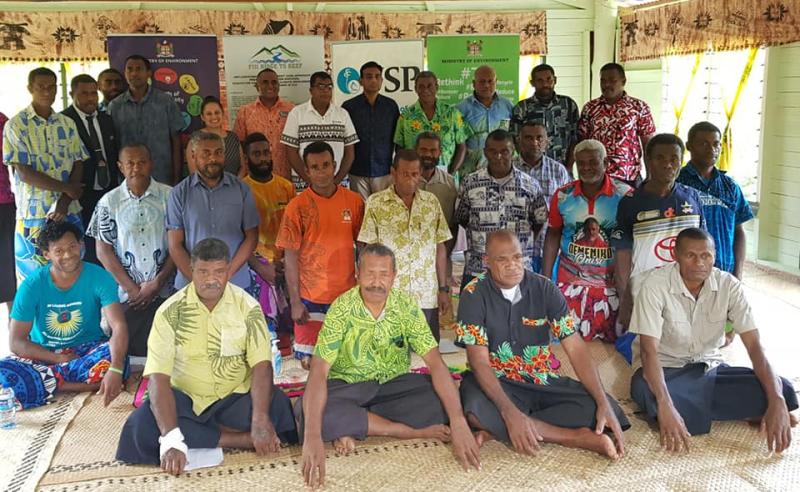
The Fijian Government (Suva, Fiji) Fiji is working with community members towards eradicating African Tulip that is threatening traditional agriculture and biodiversity conservation
Fiji’s Ministry of Environment, under its Fiji Ridge to Reef (R2R) project, is now working towards eradicating African Tulip (an invasive species) that is aggressively outgrowing native tree species and threatens traditional agriculture and biodiversity conservation in the Waidina and Labasa catchments, while rapidly increasing in the Ba and Tuva catchments.
Through the Fiji R2R project trial plots and methods were designed to eradicate African tulips from native stands.
“A total of 50 community members were trained on eradication of African Tulips. The Project also closely followed the Environmental protection measures in undertaking the trials. For instance, the chemicals were only mixed in the village and away from any all-water sources,” Minister Reddy said.
“Another striking feature of this project is the training of the communities (in April 2021) and developing their capacities and abilities to be able to undertake these control methods even before the eradication could begin. We have achieved this despite the challenges caused by the pandemic. We did this carefully through complying with all COVID requirements – spacing our training sessions based around the lockdown and safety measures in place.”
“A key milestone and an outcome from this project has been the research, design, and the establishment of a stellar mechanism to eradicate invasive species. Today, we have established a solution to eradicate the African tulip,” said Minister Reddy.
Often known as the Fame of the Forests, the African Tulip Trees can outgrow and outcompete native trees – scorching the native vegetation in the area.
“Almost 150 hectares of native forest stand has been improved, but the extent of African tulip in the catchment is far more concentrated and will need a concerted effort from the community to eradicate, given the quick dispersal abilities of African tulip. If other areas within the buffer zone are not attended to, the species will soon repopulate the 150 hectares and continue to threaten the Sovi Basin Protected Area.”
“The Sovi Basin is regarded as one of Fiji’s essential landscape ecosystems in terms of biological and landscape heritage. Sovi Basin has high biodiversity and is a potential genetic source for other areas on Viti Levu and the rest of Fiji. The entire landform is covered with undisturbed tropical forest. It is arguably the ‘jewel in the crown’ of Fiji’s protected areas system, functioning as the main storehouse of Fiji’s land-based biodiversity.”
“An inventory undertaken by the Fijian Government to determine the quantity of African tulip tree species within the 5 kilometres buffer zone from the Sovi Basin and all Mataqali boundaries revealed how widespread the infestation of the species has been. The total estimated stock for the African Tulip within 150 ha was 4214.035 m3. The communities of Naseuvou and Delailasakau from the Yavusa Naitavuni were selected to undertake this work (as the demarcated area was closest to their mataqali land),” Minister Reddy said. The Ministry of Environment (based on the findings from the eradication trials) is now working with and assisting communities and landowning units in Fiji to get rid of this invasive plant species.”
The Fiji Ridge to Reef Project is implemented by the Ministry of Environment with the aim to preserve biodiversity, ecosystem services, sequester carbon, improve climate resilience, and sustain livelihoods for various communities and villages through the ridge-to-reef management of six priority water catchments on the two main islands of Fiji, namely: The Ba River, Tuva River, and Waidina River/Rewa Delta in Viti Levu and the Labasa River, Vunivia River, and Tunuloa District in Vanua Levu.
Original publication: https://www.facebook.com/FijianGovernment/posts/336876081809929?__cft__…





